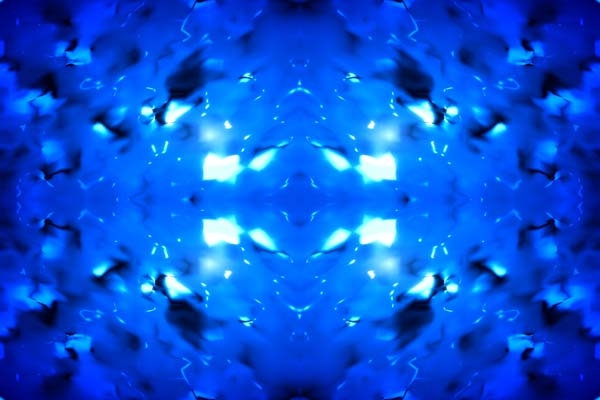Exploring the desire to control and master natural forces, Jason Haggerty's 'Surface/Control' exhibit explores a wave as more than just water.
Simulating space, repositioning and entangling the viewer, 'Surface/Control' probes the potential of a wave as an energy source to be harnessed by the human body.
What natural forces does 'Surface/Control' explore?
'Surface/Control' was proposed to be in conjunction with the exhibition, 'Cut/Back – Surfing Through Art' (which opens on the same night), so it is in response to surfing. Particularly my attention was drawn to the natural force of the wave; both its physical form and how integral it is to the city and culture – without waves we wouldn't have Surfers Paradise!
My investigation looked into the intricate parameters involved in wave formation, especially to create the perfect wave for surfing. As well as going to the beach (I've never surfed, so this was not my normal environment), I found myself looking at surf videos and images to get a better understanding of waves, and through this I found that the replication and representation of these liquid forms that were tamed and ridden by surfers were as culturally iconic as actually being in the water. So as well as exploring the natural force of the wave, I also explored the naturalised relationship we have with representations of the wave, seeking to recreate both the sensation and the idea of the wave.
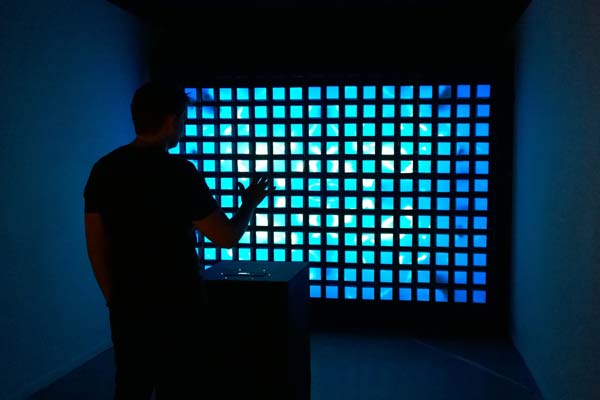 What other forms does a 'wave' take?
What other forms does a 'wave' take? A wave in its simplest understanding is a single curve of periodic disturbance; so you can think of audio waves, brain waves, as well as more physical things like a hand waving. I was interested in sine waves in the making of this work, especially when working on the audio, as I would start off with a basic sine wave oscillation, and bend it, morph it, and distort it until it started to sound like liquid, or like waves crashing.
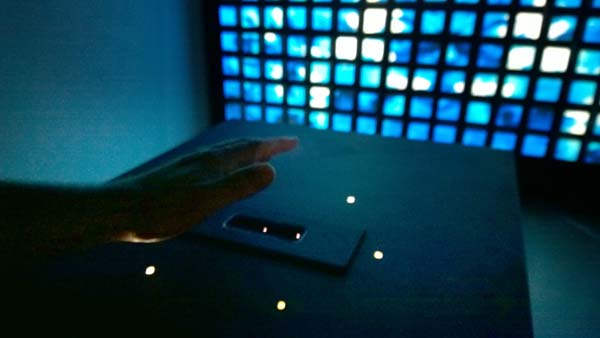 How have you harnessed energy sources in your exhibition?
How have you harnessed energy sources in your exhibition?Inside the work is a motion capture device that feeds data into a computer program that tracks the viewer's body. When the viewer moves their arms they are in turn shifting the parameters of the video. In this sense, for the artwork to function, the viewer is required to exert a certain amount of bodily energy. What I find interesting is how the body is so willing to adapt to this system, and how the physical gestures of the arm movements share a lot with how one moves balancing upon the water's surface or when treading water.
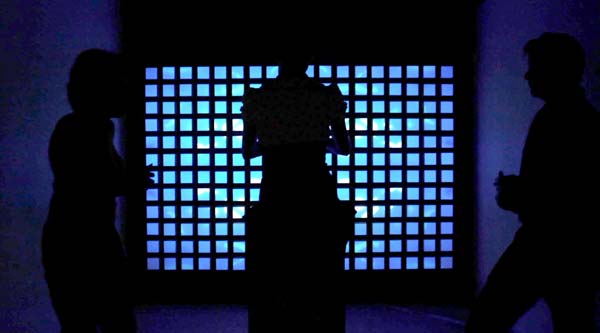 What attitudes are there towards what is considered natural phenomena versus what is considered simulation? How do they differ?
What attitudes are there towards what is considered natural phenomena versus what is considered simulation? How do they differ?I guess you have to question what is a simulation, the easiest to understand would be a computer simulation, but outside of that, a lot of modern life exists as part of a larger simulation of what is considered natural. For example how a garden should be manicured is based upon a fabricated model of standards that defines how grass, plants, and rocks should look – this is very unnatural for plant growth, yet it seems entirely natural in everyday life. This idea of simulation was at the core of my investigations of the wave, from the obvious entry point of simulating natural beach waves to a much broader cultural context. The perceptual slippage of what we understand as natural and unnatural is based upon whatever model is served up as reality - I feel the Gold Coast is a perfect example, from its artificial reef to its fake tans and tourist hotspots.
Beaches on the Gold Coast are mediated as icons for travellers and tourists that are promised a certain experience, while the shore break along 4217 is not just a beach, it is a 'surfer's paradise'. This notion of a surfer's paradise brings with it cultural codes that were developed during the 1960s (the bohemian lifestyle and a sense of freedom, the aesthetic, and the attitude) that have been regurgitated ever since to perpetuate a cultural identity that fuels tourism. This has become the catalyst for how the city is constructed, with a city centre designed for tourists it has become imperative that this idealised culture is propagated. The coast's cultural simulation always points towards the beach; it is the stimulus and source of the city's identity and economy. This isn't a bad thing, but it does spark a lot of interesting questions when considering what is natural and unnatural.
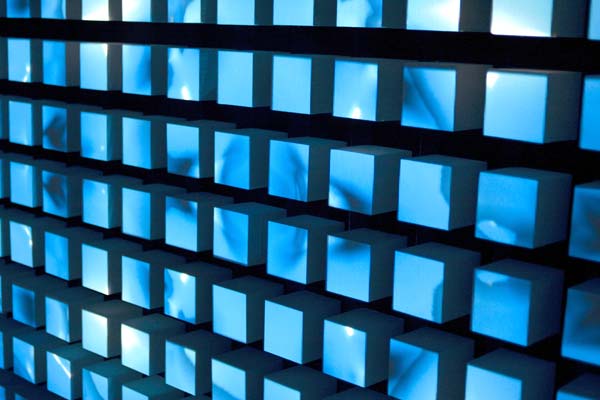 In response, 'Surface/Control' acts as a recreation of these fragmented ideas, piecing together sensations of water and waves using nothing but signals and numbers, it feels real and it feels very fabricated – there is a sense of play, but there is also a sense of emptiness.
In response, 'Surface/Control' acts as a recreation of these fragmented ideas, piecing together sensations of water and waves using nothing but signals and numbers, it feels real and it feels very fabricated – there is a sense of play, but there is also a sense of emptiness.What mediums do you employee in 'Surface/Control's exploration?
Controlling the work, from the projection mapping to the graphics and motion tracking, is a software platform called 'TouchDesigner', along with audio, and two hundred foam cubes. Generative-visuals are used to create the video aspect; this is a style of motion graphic that happens in real-time, using algorithms and programming to produce interactive media.
Waveforms, data, and coding became mediums used in the visual and aural elements – the video takes the parameters from the body tracking to oscillate data signals up and down, resulting in a fluid-like surface.
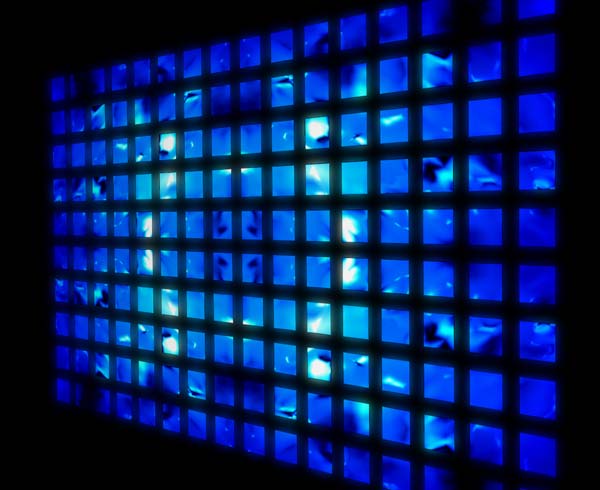
What kind of experience can people expect from your exhibition?
I wanted to create something that was visually interesting, provocative and immersive, but most of all I wanted to make something people could have fun with that would engage young and old alike. I get the most satisfaction when the viewer has a fun gallery experience, which sometimes feels out of context and a bit surprising.
Who/what were you influenced by when creating 'Surface/Control?
I have been heavily influenced by the visual programming community that exists online, many great artists from across the globe hacking and sharing data and techniques. This work and my upcoming projects owe a lot to their geeky generosity, especially when it comes to the programming side of things.
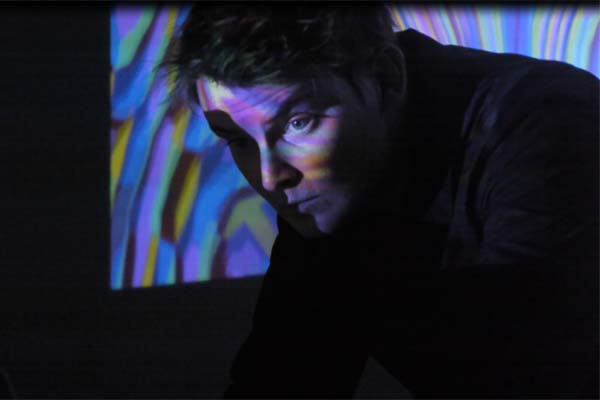 Also, I was living in Melbourne prior to working on this show, so moving back and exploring the beach prompted me to explore my own relationship to the Gold Coast, being home and re-evaluating my own identity within the coast has been very influential.
Also, I was living in Melbourne prior to working on this show, so moving back and exploring the beach prompted me to explore my own relationship to the Gold Coast, being home and re-evaluating my own identity within the coast has been very influential.'Surface/Control' exhibits at Gold Coast Arts Centre until 22 March.




